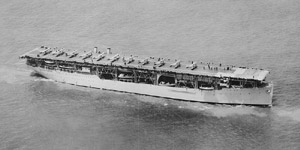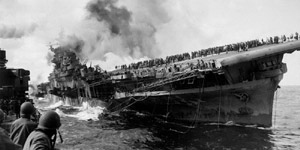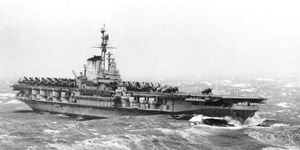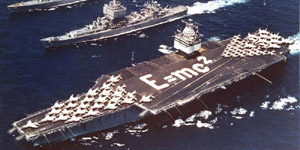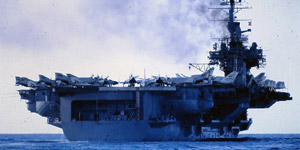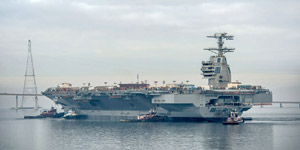Taking The Seas
Rise of the American Aircraft Carrier
Introduction
The USS Gerald R. Ford (CVN 78) will be the largest, most powerful warship the world has ever seen - ten times larger than the USS Langley (CV 1), America's first aircraft carrier. The Ford will define a new class of these capital ships, more dynamic, more capable than any that has sailed before her. Yet the legacy of her predecessors dating back nearly a century can be seen in her lines and courses through her steel.
In the early years of the 20th century, airplanes made of wood and fabric were launched by hydraulic gears from decks planked with wood. And in those early days, the carrier's mission was as uncertain as the bi-winged airplane was precarious. But in time the aircraft carrier matured, and her purpose became clear. She would replace the battleship as the matriarch of the fleet, and with her courtiers of cruisers and destroyers, live out President Washington's vision that with a "decisive naval force" America can do "everything honorable and glorious." Carriers would indeed prove decisive and earn glory in the great naval battles of World War II. And in the post-war years, the carrier and her escorts would prove Theodore Roosevelt's studied observation that, "A good Navy is not a provocation to war..." but "...the surest guarantee of peace."
The Ford-class carriers will lead the Navy into the 21st century, launching carbon-fiber jets from electric rails. As she takes the seas, however, her mission is the same as the storied carriers that sailed before her - to project the power of the United States abroad while defending America's interests. The USS Gerald R. Ford, like the Nimitz, the Enterprise, the Forrestal, and the Essex, will serve as a primary guarantee of the peaceful, free use of the seas.
Dive Deeper: Click on an image below to begin your exploration of the eras of American aircraft carriers.
